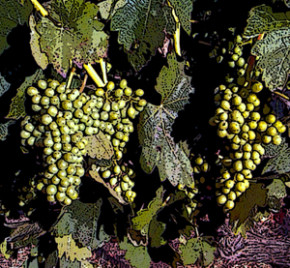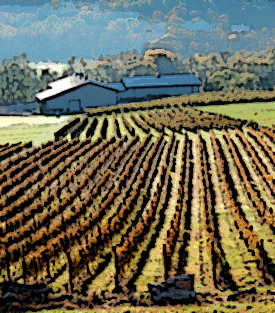Will New Jersey Wineries Finally Get Respect?
The ‘Judgment At Don’s House’ Stuns The International Wine Geek Community!
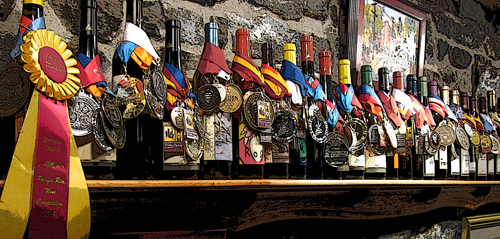
New Jersey’s Alba Vineyard tasting room is full of awards and medals but what it needs is a little respect.
Wines from New Jersey are the Rodney Dangerfield of the wine world – they don’t get no respect. Winemakers here sometimes feel like the rest of the world hates their wines. How could that be? The rest of the world hasn’t tasted them yet.
New Jersey’s wine industry has made impressive strides in quality over the past decade, even though the Garden State still sucks when it comes to bridge traffic studies. And while Millville isn’t exactly Oakville, winemakers from around the world are still genuinely surprised when they taste certain New Jersey wines. Their response is typically, “Am I being punked? Where did this wine really come from?”
Read MoreFermentation Is Like Science, Except That People Still Believe In Fermentation.
Chapter Twelve. Part One.
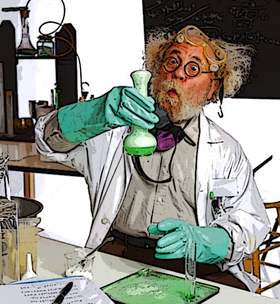 When I was a child, white-tailed bucks often ventured into my yard to feast on the apples collecting under the trees. Occasionally they would eat the rotten apples that had naturally fermented into wine and soon they’d be sloppily shouting to each other, “I really love you man!” Eventually they’d stagger into the woods in search of a stag party or wherever it is that drunken deer go.
When I was a child, white-tailed bucks often ventured into my yard to feast on the apples collecting under the trees. Occasionally they would eat the rotten apples that had naturally fermented into wine and soon they’d be sloppily shouting to each other, “I really love you man!” Eventually they’d stagger into the woods in search of a stag party or wherever it is that drunken deer go.
The apples had turned into fruit wine because fermentation occurs naturally when sugar comes into contact with nature’s abundant yeast organisms. Environmental factors such as oxygen, temperature, and global warming all play their part, but left alone Mother Nature is a passable winemaker. In fact, I’d say she’s an above average winemaker given some of the mediocre plonk I’ve had to endure during my tenure in the wine trade.
Read MoreThe Future’s Not Ours To See. Que Syrah, Syrah.
When attending wine tasting seminars, proper etiquette requires you comport yourself with professionalism, propriety, and dignity. You will learn, as I have, that if you conduct yourself with all due decorum, chances are you’ll end up face down under a table.
Earlier this year I attended a seminar in Santa Barbara featuring several winemakers from Ballard Canyon, one of California’s newest A.V.A.s located in the Santa Ynez Valley. The seminar was followed by a tasting of impressive wines from the appellation. After listening to speaker after speaker, the moment that the audience had been waiting for finally arrived – the bathroom break.
Read MoreWine Tasting Techniques; Weight A Minute.
Chapter Three. Part Twelve.
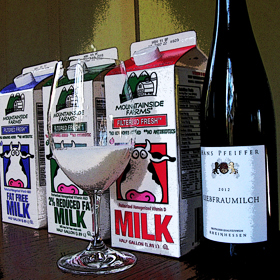 Analyzing wine means much more than simply identifying aromas and flavors; you must also learn to identify tactile sensations. This will help you learn what textural profile appeals to you so you can express your likes or dislikes to a salesperson when you’re shopping for wine. Take full-bodied wine for example. You might love it. Your spouse hates it. Your goldfish doesn’t care one way or the other. And what about wines that are crisp or creamy, hard or soft, regular or decaf?
Analyzing wine means much more than simply identifying aromas and flavors; you must also learn to identify tactile sensations. This will help you learn what textural profile appeals to you so you can express your likes or dislikes to a salesperson when you’re shopping for wine. Take full-bodied wine for example. You might love it. Your spouse hates it. Your goldfish doesn’t care one way or the other. And what about wines that are crisp or creamy, hard or soft, regular or decaf?
Wine offers an abundance of textures but the tactile sensation we’re discussing today is weight …
Okay, that’s long enough.
Read MoreWho’s On Thirst?
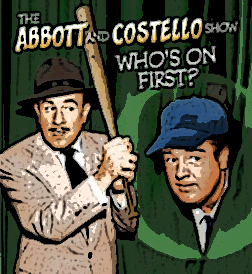 Good help can be hard to find in a wine store. I once told an employee to be careful with a bottle of 1927 Fonseca Vintage Port and he said, “Don’t worry boss, I’ll treat it like it’s brand new!”
Good help can be hard to find in a wine store. I once told an employee to be careful with a bottle of 1927 Fonseca Vintage Port and he said, “Don’t worry boss, I’ll treat it like it’s brand new!”
Perhaps you’ve had trouble getting knowledgeable recommendations when you’re looking for wines to pair with a special dinner. You’re not alone as wine consumers and wine salespeople often choose wine through a process of mutual misunderstanding. Of course I’m not your average wine salesman so this never happens to me. No, I’m 100% right, half the time.
But of course I’ve witnessed plenty of misunderstandings between wine customers and a wine salespeople. A typical conversation on the selling floor can sound a lot like an Abbott and Costello routine. Let’s listen in.
Customer: Excuse me Mr. Wine Expert, can you help me pick wines to serve with my four course dinner?
Clerk: I certainly can. What’s the first course?
Customer: Stew’s on first.
Read MoreWine Tasting Techniques; How To Taste Better.
Chapter Three. Part Eleven.
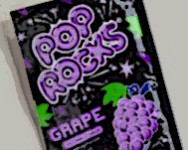
Do you remember Pop Rocks – the 1970’s candy made of carbonated sugar granules tinted with some sort of unearthly dye and coated in polyethylene? When eaten, the outer plastic sealant dissolved and a radioactive uranium isotope was released, creating a tiny nuclear reaction in your mouth. But it was a happy nuclear reaction, filled with cheerful little explosions of flavor – just like grandma used to make.
Okay, so maybe it wasn’t polyethylene or a nuclear reaction, but that’s what it felt like. You may find this hard to believe but I try to be completely honest in my writing. I also try to be 175 pounds and that’s not working out so well either.
It’s A Matter Of Degrees.
Chapter Three, Part Ten.
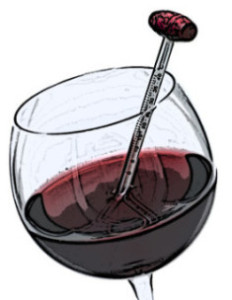 Proper wine tasting technique starts with serving wine at the right temperature. Don’t get me wrong. I’m not one of those extremists who bring a wine thermometer to a restaurant and obsess over a few degrees. I’d much rather obsess over something important like who’s picking up the check.
Proper wine tasting technique starts with serving wine at the right temperature. Don’t get me wrong. I’m not one of those extremists who bring a wine thermometer to a restaurant and obsess over a few degrees. I’d much rather obsess over something important like who’s picking up the check.
When wine is served too cold it will exhibit less flavor than one served at room temperature. This is good if the flavors are bad, but it’s bad if the flavors are good. What I’m saying is, cold masks both the quality and the flaws in wine. Studies have shown that people who drink wine too cold become bored and their lives soon lose meaning, usually resulting in heroin abuse or worse, a subscription to People Magazine.
Read MoreA Lesson In How To Smell Better.
Chapter Three, Part Seven.
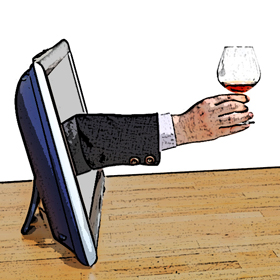 Late in 1993 an ENT specialist assured me that sinus surgery would not affect my sense of smell. He lied.
Late in 1993 an ENT specialist assured me that sinus surgery would not affect my sense of smell. He lied.
Months after the surgery I still couldn’t smell which was a little disconcerting since I was about to make wine sniffing my life’s work. I felt like Manny Ramirez facing Mariano Riviera in the bottom of the ninth – minus the steroids.
The surgery made my sense of smell spotty and inconsistent which made analyzing wine difficult. I had to get my schnoz back in shape so I sent it to basic training snoot camp. I’d go to a wine tasting and smell every wine in the room. When I had a snoot-full and thought about quitting I’d hear this drill sergeant in my head screaming, “Come on Carter! Gimme 50 more! You can do it ya pussy! Sniff that Beaune, smell that Pfalz!” Within a year I probably stuck my nose in 10,000 wine glasses, which wasn’t nearly as much as I stuck it in other people’s business. The work paid off and today my nose runs constantly.
Read MoreNew Jersey Wineries Are Bringing Home The Bling.
I recently picked up a brochure about all the great things happening in New Jersey. It was a very thin brochure. As I perused the pamphlet I was beginning to think there’s not much to do here once you’ve seen Lucy the Elephant (six stories tall in Margate) or visited the world’s largest light bulb (14 feet tall, 8 tons in Edison). But then a section about New Jersey wineries caught my eye.
I was shocked to learn my beloved state is now host to approximately fifty wineries. As recently as the year 2000 there were only a dozen New Jersey wineries and after visiting one a few decades ago I didn’t see any reason to build more. Fifty New Jersey wineries reminded me of that old joke about bad diner food; “This food is horrible, but at least there’s lots of it.”
Read MoreWine Evaluation; The Nose Knows No’s Not An Option.
Chapter Three, Part Six.
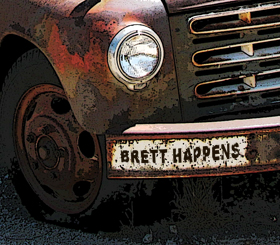 In certain wine circles people share the opinion that the difference between an aroma and a bouquet has to do with the age of the wine. They believe that young wines display aroma, and only when wine reaches maturity will it develop a bouquet. While studying for my Sommelier certificate, I was taught that aroma comes from the grape variety and bouquet stems from the vinification process. I, of course, don’t subscribe to either school of thought.
In certain wine circles people share the opinion that the difference between an aroma and a bouquet has to do with the age of the wine. They believe that young wines display aroma, and only when wine reaches maturity will it develop a bouquet. While studying for my Sommelier certificate, I was taught that aroma comes from the grape variety and bouquet stems from the vinification process. I, of course, don’t subscribe to either school of thought.


